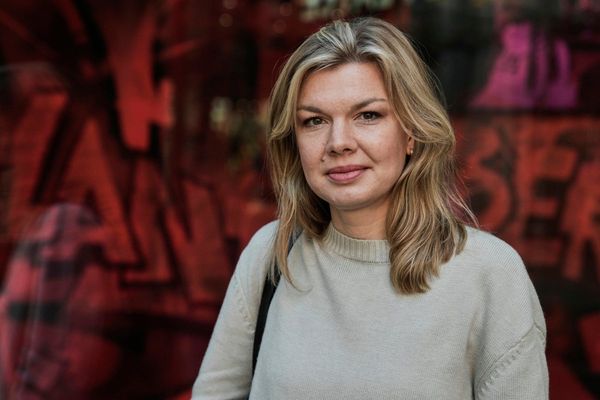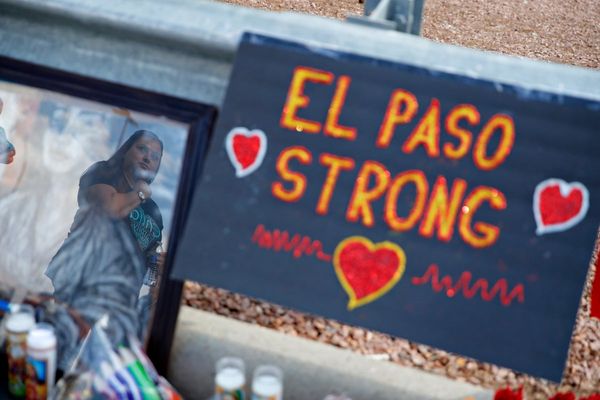
Shilo Kino on the power of being a Māori journalist, from a powerful new anthology of Māori writing
The night before I met the four sisters, I couldn’t sleep. I spent hours reading through the court documents which detailed the horrific abuse, the injustice and travesty of what these girls had gone through. It was heartbreaking, emotional and heavy to say the least. As I lay awake on my bed thinking about them and how to tell this story, I felt the calming but formidable presence of not only my tīpuna but their tīpuna as well. The feeling was indescribable. Listen to your ancestors, I’ve been told over and over again. I understand now, more than ever, what that truly means.
The next day I was at Waimārama beach where the abuse of all four sisters took place. I was surprised when I stepped foot on the whenua. Although the most horrific acts happened here, I felt strong female energy as I walked on the sand with Jodeci. We were on whānau land where wāhine had been the kaitiaki of the whenua for generations.
Jo is the oldest sister and was the first to come out to her sisters about the abuse, leading the charge in a five-year court battle of convicting their step-grandfather for rape and sexual violation. It was also her idea to waive name suppression so the whole world would know their story. Jo was the mama of two beautiful girls. She wanted to break the cycle for them. As she said so courageously, ‘it was either take my life or give my life to this cause.’
As we walked along the path, I told Jo that I had felt her ancestors. To anyone else, it might be a weird thing to say to someone you’ve just met that you felt their dead relatives. But I knew Jo would understand. She nodded and said, ‘I’ve felt my tīpuna guiding me throughout this whole process. I realise that speaking up about the abuse wasn’t just breaking the cycle for future generations. I’m breaking the cycle for past generations, for my tīpuna who never got the chance to speak. I’m speaking up for them too.’
It was this connection and acknowledgement that lay the foundation for our story, that navigated me and the Marae team in telling this story with great care. It was in this sacred moment I was reminded of what it means to be Māori and the power of being a Māori journalist. Our connection to the whenua, our connection to our tīpuna and our connection to each other. Where sometimes words don’t need to be said, we are simply just understood.
We gathered on top of the balcony and Matua, our sound man, offered a karakia. He acknowledged the girls, the whenua and their tīpuna. I felt a shift in my own wairua and it put the girls at ease too. I watched in awe as each sister, who off camera were soft spoken and quiet, stood in front of the camera and read out their victim statements with undeniable mana.
‘You are free to choose the choices you make, but you are not free from the consequences of your choice!’ I felt the ripple of the earth as each sister spoke. It was breathtaking and incredible to witness. I also knew that we were not alone.
As a Māori writer and a journalist, I have felt an enormous responsibility to do everything I can to change the narrative. I didn’t ask for this calling but it is a charge that has been placed on every Māori journalist who has been burdened with decades of negative mainstream media stories that have plagued the industry and our culture for too long.
It is a fight that began years before I came into this space but I felt the brunt of it as a young girl who wanted the ground to
Because of this responsibility, I have a weird internal conflict in my head every time I cover a story. I don’t want to tell another negative Māori story but at the same time, I know that not every Māori story is positive because the reality is, we are over-represented in some of the worst statistics in the world. The fact that our Māori wāhine are the most incarcerated Indigenous women in the world is absolutely horrendous. This was another story I covered earlier this year.
I have to constantly ask myself, am I advancing a racist narrative or am I fighting against it? How can I tell this story properly? When I was working for mainstream media, I did mostly ‘positive’ feel-good Māori stories. I wanted the people who read the negative Māori stories from the same publication to see one of my stories and understand Māori are not all gang members, criminals, child abusers and that we can be good people too, successful even. It was a tireless and draining exercise that I was never going to win. Because being a Māori journalist means not only are we constantly fighting against racism in our everyday life, we are fighting the worst kind of racism inside our own industry.
I don’t think Jo, Matariki, Selena or Nature could have anticipated how many people their story would reach. Over a million views across social media and hundreds of messages flooding in from both men and women who were deeply moved and inspired by their story. Some have come out to their own whānau, others are in the process of taking their perpetrator to court. I can honestly say that their tīpuna were there throughout the process. From the filming, to the script writing and then to the final product. And I can only imagine the rejoicing of not only the sisters’ tīpuna but the tīpuna of the many survivors who were inspired by the four sisters to speak out and break a cycle within their own whānau and community.
We have been held back for so long, our voices stripped away from us as colonisation has infested its way into the media industry. And maybe that was the point of it. To hold us back from the extraordinary power that comes when we are telling our own stories, our way. When Jo looked down the barrel of the camera and said, ‘the cycle stops with me!’ she was talking to every one of us who are, in some way or another, breaking cycles, being pioneers and leading the next generation into a new way of living.
As a Māori journalist and writer, I know that our stories don’t begin inside a prison cell or gang headquarters. Our stories began when our ancestors navigated to the shores of Aotearoa and when we were colonised by Pākehā. And maybe that’s the difference when we tell our own stories. Kia whakatōmuri te haere whakamua. I walk backwards into the future with my eyes fixed on my past.
Ko Hikurangi te maunga Ko Waiapu te awa
Ko Horouta te waka
Ko Matahi o te Tau me Hinepare ōku marae Ko Ngāti Porou te iwi
Ko Te Whānau a Rerewa me Te Whānau a Tarahauiti ōku hapu
Ko Rongowhakaata, Te Aitanga a Māhaki, me Ngāi Tahu ōku nei iwi katoa Ko Henarata Kohere Pishief tōku ingoa
Republished with kind permission from the new anthology of Māori nonfiction Ngā Kupu Wero edited by Witi Ihimaera (Penguin Random House, $37), a companion volume to the fiction and poetry collection Te Awa o Kupu, edited by Vaughan Rapatahana and Kiri Piahana-Wong (Penguin Random House, $37). Contributors to these two powerful anthologies include Hinemoa Elder, Airana Ngarewa, Morgan Godfrey, Kelly Ana Morey, and Tayi Tibble. Reading Room is devoting all week to the two volumes. Tomorrow: "Reasons why I called in sick rather than go to the mihi whakatau for new employees last Friday", by Jack Remiel Cottrell.
"The power of being a Māori journalist" by Shilo Kino was first published in Newsroom on December 16, 2020.








